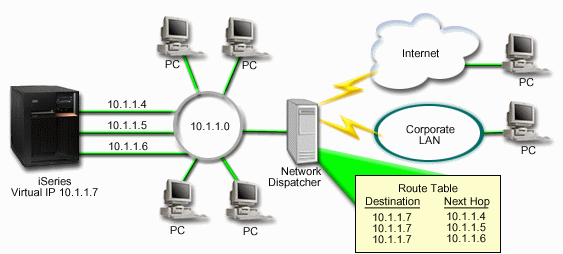A virtual IP address (VIP or VIPA) is an IP address that doesn't correspond to an actual physical network interface (port). Uses for VIPs include Network Address Translation (especially, One-to-many NAT), fault-tolerance, and mobility.
Usage
For One-to-many NAT, a VIP is advertised from the NAT, and incoming data packets destined to that VIP address are routed to different actual IP addresses (with address translation). These VIPs have several variations and implementation scenarios, including Common Address Redundancy Protocol (CARP) and Proxy Address Resolution Protocol (Proxy ARP). In addition, if there are multiple actual IP addresses, the NAT can perform load sharing.
VIPs are also used for connection redundancy by providing alternative fail-over options on one machine. For this to work, the host has to run an interior gateway protocol like OSPF, and appear as a router to the rest of the network. It advertises virtual links connected via itself to all of its actual network interfaces. If one network interface fails, normal OSPF topology reconvergence will cause traffic to be sent via another interface.
A VIP can be used to provide nearly unlimited mobility. For example, if an application has an IP address on a physical subnet, that application can be moved only to a host on that same subnet. VIPs can be advertised with 32-bit masks (unsubnetted), so its application can be moved anywhere on the reachable network without hanging address.

